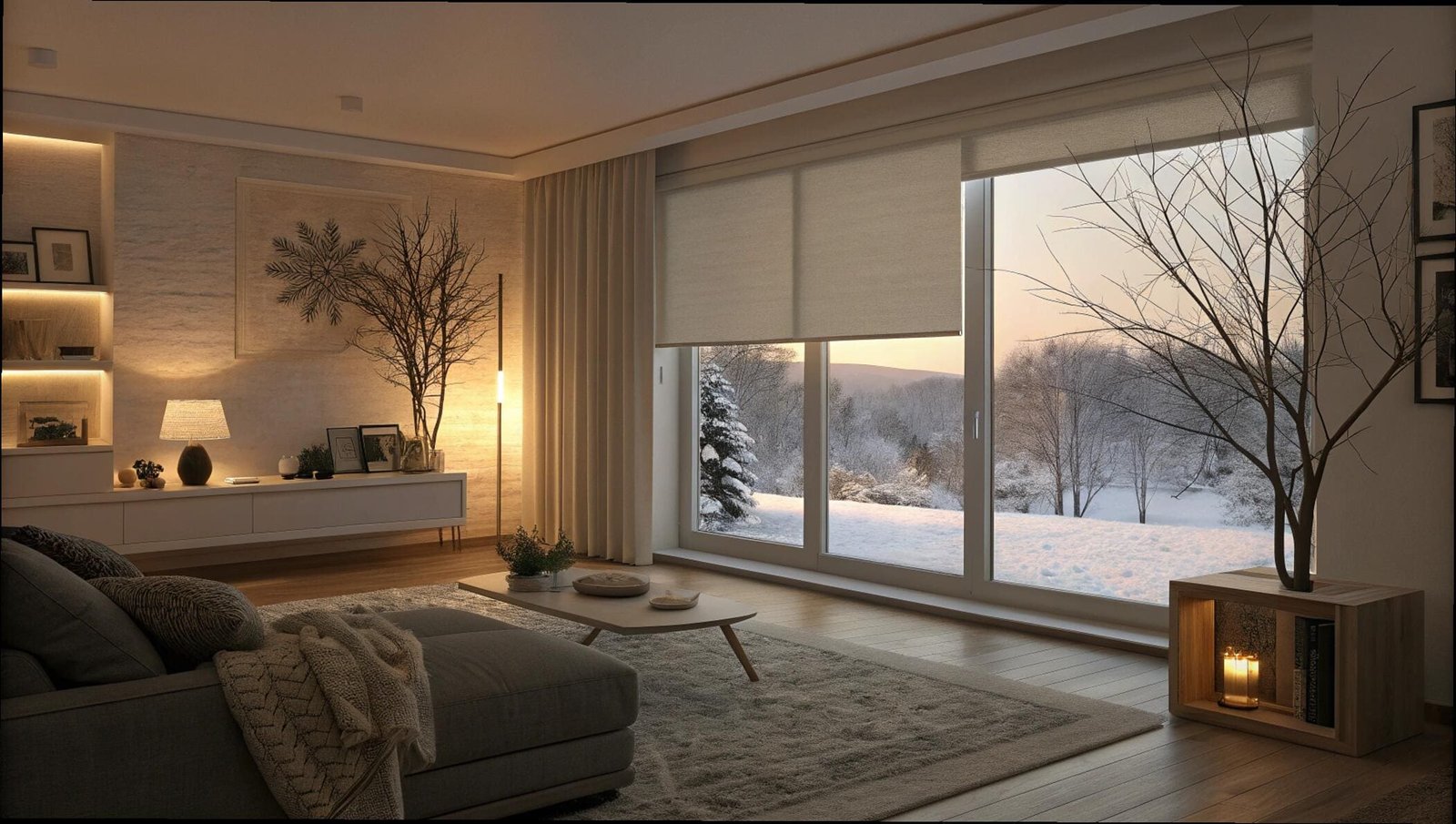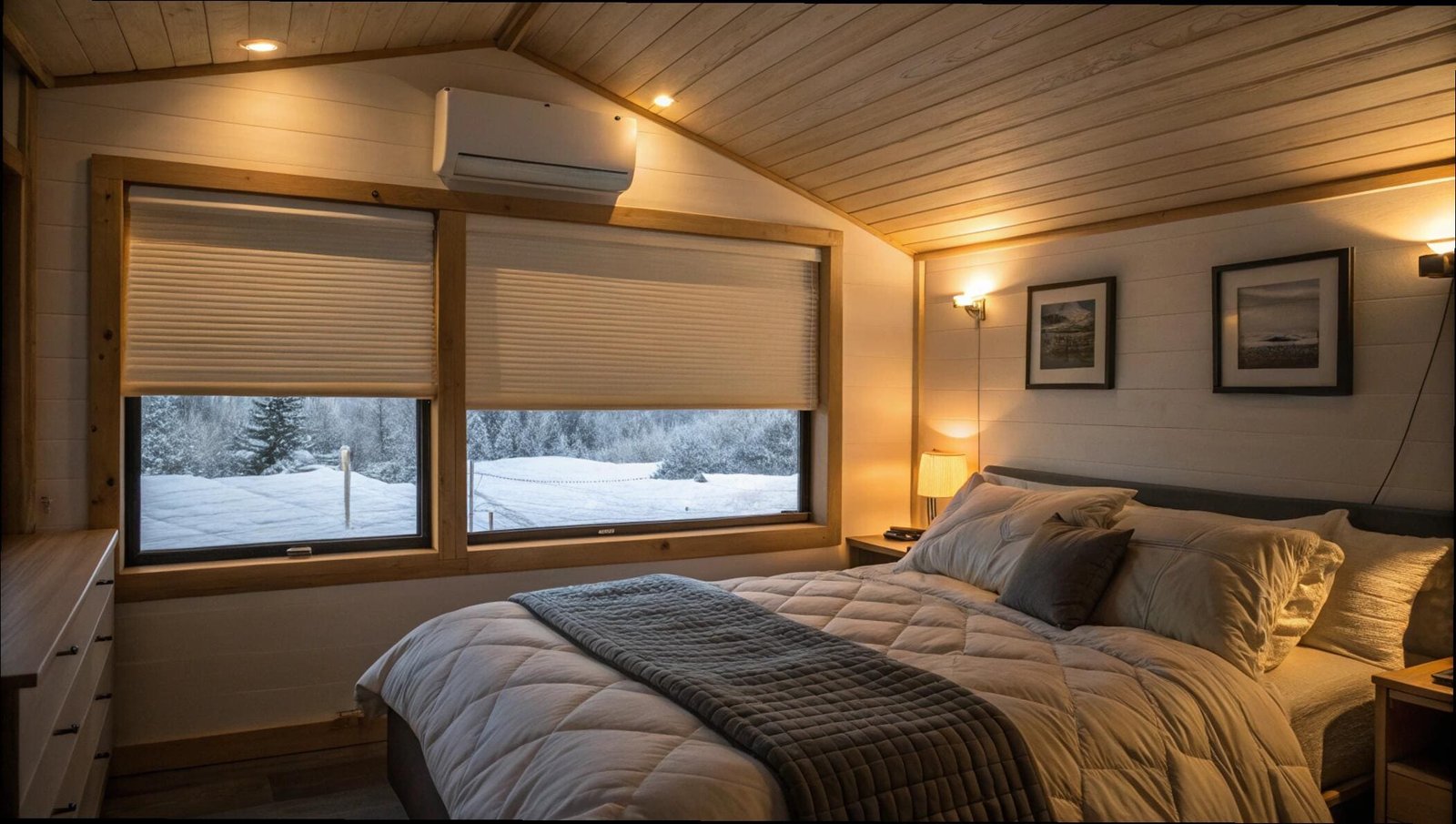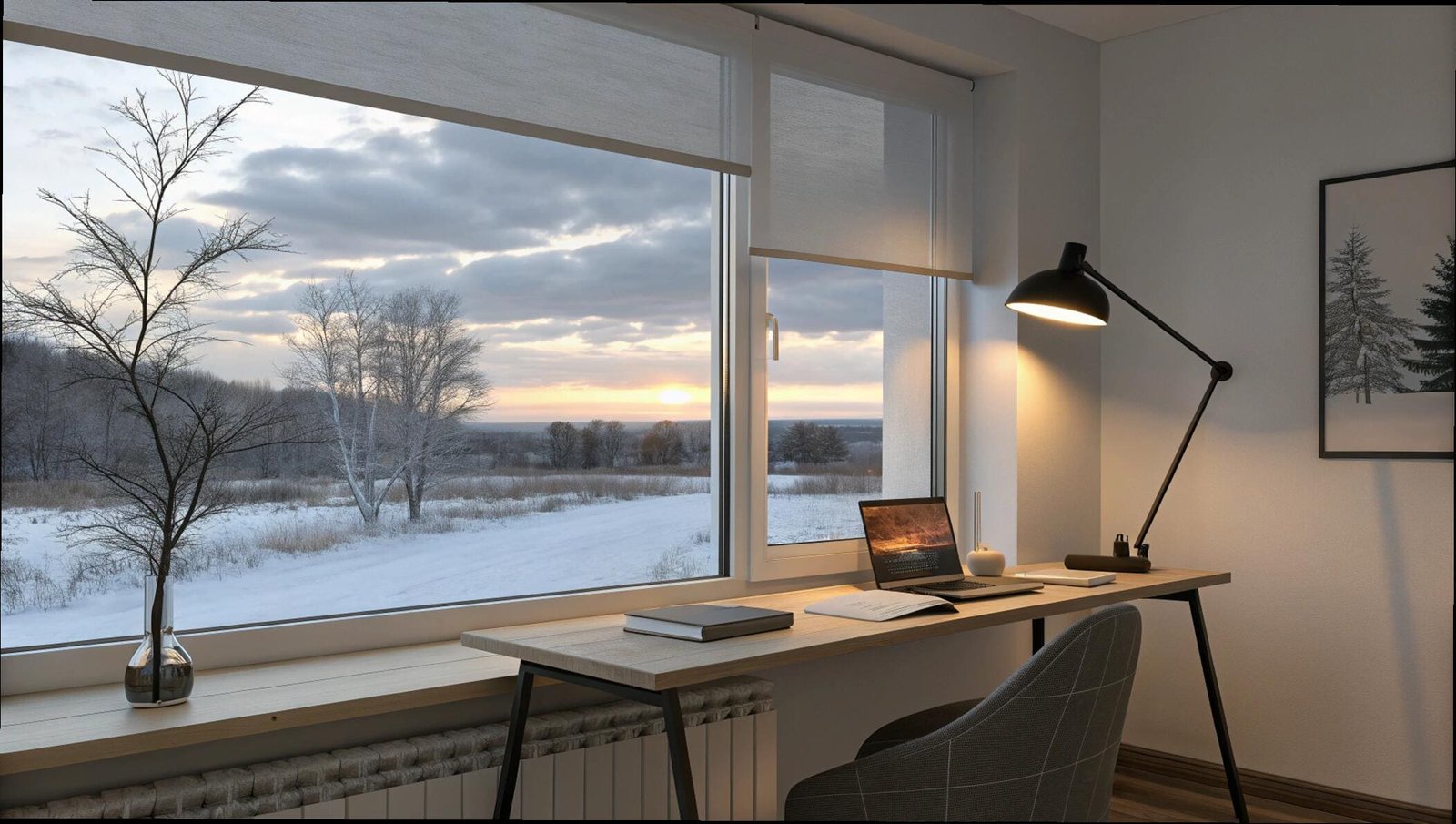The winter chill sets in, and you can feel the heat—and your money—leaking right out the windows. You need a simple, effective way to make your rooms warmer and reduce those high heating bills.
Yes, blackout blinds1 absolutely help keep heat in during winter. Their multi-layered, opaque fabric creates a substantial insulating barrier2 against cold windowpanes. This dramatically reduces heat loss, helping to maintain a warmer, more comfortable room temperature and improve energy efficiency3.

Explore our full range of 👉 Roller Shades
Many of my clients initially think of blackout blinds as a solution for summer heat and light control. But the conversation has shifted. Now, they are looking for year-round energy efficiency. The same properties that block out the sun's heat in summer are incredibly effective at keeping your home’s warmth inside during the winter. It’s about leveraging a single smart product for dual-season benefits. The key to maximizing this effect, as I always tell my project partners, is in combining the right thermal fabrics4 with a perfect fit.
How Do Blackout Blinds Actually Retain Heat?
You've heard that blackout blinds can keep a room warmer, but it seems unlikely. How can a piece of fabric really make a noticeable difference against the winter cold seeping through a large pane of glass?
Blackout blinds retain heat by creating a trapped layer of air between the blind and the window. This pocket of still air acts as an insulator, slowing the natural process of heat escaping from your warm room to the cold glass.

Explore our full range of 👉 Honeycomb Blinds
The insulating power of a blackout blind comes from its material science and construction. It's not just about being opaque.
- Material Composition: True thermal blackout fabrics often have a multi-layered design. This can include a decorative front-facing fabric, a central light-blocking layer, and, most importantly, a thermal backing5. This backing is what does the heavy lifting for insulation. Based on our thermal tests, roller blinds with a proper thermal backing can reduce heat loss6 by up to 40% in winter.
- The Air Gap: The most critical element is the air gap7. When you lower the blind, you trap air. This trapped air is a poor conductor of heat, so it creates a buffer zone. It significantly slows down convection, the process where warm room air circulates, hits the cold glass, cools, and sinks, creating drafts and heat loss6.
- Engineered Insulation: Some designs are specifically engineered for this purpose. Honeycomb cellular shades, for example, are the ultimate insulators. Their unique structure creates multiple air pockets that trap air, forming a powerful barrier that blocks heat transfer.
Are Blinds or Curtains Better for Winter Insulation?
You're trying to decide between blinds and curtains for maximum warmth. Thick, heavy curtains seem like the obvious traditional choice, but you wonder if modern blinds offer a more effective, streamlined solution.
While heavy thermal curtains are very effective, a well-fitted, engineered blind—like a honeycomb cellular shade—can offer superior insulation. The best solution for maximum energy savings8 is often layering a thermal blind on the inside of the window recess9 with curtains on the outside.

This is a question I get from designers all the time. Here's how I break it down:
| Feature | Thermal Curtains | Thermal Blinds (e.g., Cellular) |
|---|---|---|
| Primary Mechanism | Heavy fabric mass drapes over the window, trapping air between its folds and the wall. | Engineered air pockets trap air directly against the window, creating a sealed barrier. |
| Fit | Hang outside the recess. Can be prone to drafts around the edges, top, and bottom. | Can be fitted tightly inside the window recess, creating a much better seal against air movement. |
| Material Tech | Relies on thick, often multi-layered fabric. | Uses specific structures (like honeycomb cells) or reflective backings to manage heat. |
| Aesthetics | Softer, more traditional look. Can add bulk to a room. | Sleek, modern, and minimalist. They disappear when raised. |
Ultimately, a purpose-built cellular shade is often more technically efficient because its design is entirely focused on trapping air in a structured way. However, the combination of a tight-fitting blind to stop the initial heat loss at the glass, plus heavy curtains to prevent any remaining drafts, creates an unbeatable insulation system.
What Are the Other Benefits of Blackout Blinds?
You're focused on saving heat, but you want to make sure your investment pays off in other ways. What else can blackout blinds offer beyond just winter insulation?
The primary benefit of blackout blinds, besides insulation, is their ability to block nearly 100% of incoming light, which is proven to improve sleep quality10. They also provide complete privacy, can reduce outside noise, and protect furniture from fading by blocking harmful UV rays.

Blackout blinds are a multi-functional solution, which is why they are so popular in both residential and commercial projects.
- Superior Sleep: The human body produces the sleep hormone melatonin in darkness. Blackout blinds create a pitch-black environment, even during the day, which helps regulate sleep cycles. This is essential for shift workers, nurseries, or anyone sensitive to light.
- Total Privacy: Unlike light-filtering blinds, blackout blinds are completely opaque. No silhouettes or shadows are visible from the outside at night, offering the highest level of privacy for bedrooms and bathrooms.
- UV and Furniture Protection: Direct sunlight contains UV rays that fade and damage expensive furniture, artwork, and flooring over time. Blackout blinds block up to 97% of these harmful rays, preserving your interiors.
- Noise Reduction: While not soundproof, the thick, dense material of blackout blinds can help dampen outside noises, contributing to a quieter and more peaceful indoor environment.
How Do I Choose the Right Blackout Blinds for My Project?
You're ready to invest, but the market is full of options. How do you select the best type of blackout blind that will provide the most effective thermal insulation for winter?
For maximum insulation, choose a blind specifically engineered for thermal performance11. Honeycomb (or cellular) shades are the best option, as their structure is designed to trap air. High-quality roller blinds with a dedicated thermal backing are another excellent, cost-effective choice.

Explore our full range of 👉 Roman Shades
When I advise clients on specifying blinds for energy efficiency, we focus on these key types:
-
Honeycomb / Cellular Blinds: These are the undisputed champions of insulation.
- How they work: The honeycomb-shaped pockets trap air, creating a powerful thermal barrier.
- Best for: Any room where thermal performance is the absolute top priority.
- Pro-Tip: Double-cell designs trap even more air and offer the highest level of insulation.
-
Thermal Roller Blinds: This is the most popular and versatile option.
- How they work: A standard roller blind fabric is coated with a thermal backing on the side that faces the window.
- Best for: Living rooms, bedrooms, and offices where you want a balance of sleek design, ease of use, and strong thermal performance.
- Pro-Tip: Ensure the blind is measured to fit tightly inside the window recess to minimize heat-leaking gaps.
-
Roman Blinds with Blackout Lining: A great choice for a more decorative, softer look.
- How they work: The blackout lining adds an extra layer of thick material, which helps trap air when the blind is down.
- Best for: Spaces where style and a traditional feel are as important as insulation.
- Pro-Tip: The insulating effect is highly dependent on a good fit to prevent drafts around the soft folds.
Conclusion
Blackout blinds are a highly effective way to keep heat in during winter. For the best results, choose a thermal material like a honeycomb shade or a backed roller blind, ensure it is fitted tightly, and consider layering with curtains.
Partner with VelaBlinds for Your Next Project
Smart window treatments shouldn't be complicated. After working with 500+ distributors and contractors worldwide, I've streamlined the process to get you quality products, competitive pricing, and reliable support - every time.
Why project professionals choose VelaBlinds:
- ✅ Fast, Accurate Quotes - Detailed specs and pricing within 24 hours
- ✅ Transparent Pricing - No hidden fees, volume discounts clearly outlined
- ✅ Quality Assurance - Direct partnerships with certified OEM manufacturers
- ✅ Project Support - Dedicated account manager from quote to delivery
Start your next project:
📧 Quick Quote: Send your requirements to info@velablinds.com
📱 Direct Contact: WhatsApp +86 137 2012 8317
🌐 Browse Solutions: https://velablinds.com/
📁 Product Resources: Access spec sheets, catalogs & project files
Paul Chen, Founder
"I built VelaBlinds to solve the real challenges I faced as a project buyer - long lead times, unclear specs, and unreliable suppliers. Let's discuss how we can power your projects with smarter blinds."
Serving distributors and contractors across North America, Europe, and Australia since 2018.
-
Explore how blackout blinds can significantly reduce heat loss and improve energy efficiency during winter. ↩
-
Learn about the science behind how blackout blinds trap air and insulate your home effectively. ↩
-
Discover various strategies to enhance energy efficiency in your home during the colder months. ↩
-
Find out which thermal fabrics provide the best insulation for your blackout blinds. ↩
-
Find out how thermal backing enhances the insulation capabilities of roller blinds. ↩
-
Get tips on minimizing heat loss in your home to save on heating bills. ↩ ↩
-
Learn how the air gap in blinds contributes to better insulation and energy savings. ↩
-
Explore various products that can help you save energy and reduce heating costs. ↩
-
Understand the significance of a proper fit in preventing heat loss through gaps. ↩
-
Find out how blackout blinds can enhance your sleep environment by blocking light. ↩
-
Get insights on selecting blinds that maximize thermal performance for winter insulation. ↩




